Research infrastructure cuts would hit northen Australia hard
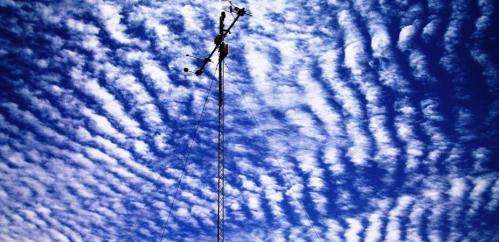
We live in a world where big data fuels a knowledge economy. In this world, innovative new tools for gathering, analysing and sharing information are crucial for continued economic growth and social prosperity.
As such, research infrastructure – the labs, experimental equipment, computing power and data that power scientific research – is at least as important for national competitiveness and productivity as roads, rail lines and airports. Yet our national research infrastructure is currently under threat while the government withholds crucial funding unless its stalled higher education reforms pass through the Senate.
Suffice to say that failing to provide secure funding for long-term science infrastructure is the antithesis of good governance, and is profoundly at odds with the far-sighted rhetoric accompanying the recent Intergenerational Report.
The real-world impact in withholding National Collaborative Research Infrastructure Strategy (NCRIS) funding would be immense. Even cutting just one of the 27 national facilities funded through NCRIS, such as the Terrestrial Ecosystem Research Network (TERN), with which we're involved, would be considerable. Here's why.
Research infrastructure in the Top End
Northern Australia hosts the largest intact expanses of tropical savanna in the world. This occupies more than two million square kilometres of northern Australia, and is a crucial component of the national and global carbon budget.
TERN provides a wide range of ecosystem science facilities across the continent, including the top end of Australia. These facilities, and the data they generate, are used by a wide range of researchers, businesses and community groups.
In the Northern Territory, TERN enables us to manage the largest land-atmosphere program in Australia via six linked eddy covariance flux tower sites in the tropical savanna, such as in Litchfield National Park. We are using the data from these towers to explore drivers of past, current and future exchanges of carbon, water and energy from land systems that occupy one third of Australia.
The flux tower network, OzFlux, is linked through TERN to a remote sensing facility, AusCover, which enables us to use satellite data and sophisticated processing software to scale up our site-based measurements to encompass whole landscapes.
The large data streams generated by this specialised observational equipment and informatics are then analysed with the help of TERN's ecosystem modelling facility (eMast).
The diagrams below illustrate just one application of this infrastructure. In this case it's the first paddock scale measurement of CO2 emissions from a land clearing event.
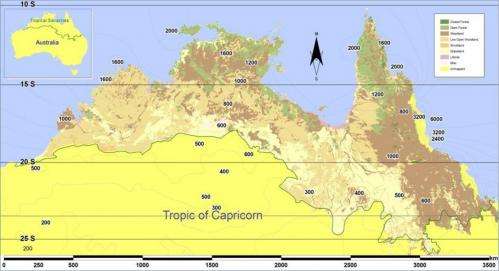
Wise investment
From an academic perspective, this is a highly productive investment. The TERN funding through Charles Darwin University (CDU) currently supports two full-time research positions plus six postgraduate students. It also underpins research funded by the Australian Research Council and the National Environmental Research Program (NERP).
We have also revealed large carbon sinks in semi-arid and savanna systems of Australia and southern Africa. The savanna carbon balance is shifting and influencing planetary carbon cycling and thus climate.
Northern Australian landscapes are dominated by fire, which has a crucial impact on vegetation structure and productivity and thus carbon flow between the land and atmosphere.
TERN helps us untangle these drivers and processes, like water use, water use efficiency, light use efficiency, and carbon sequestration, storage and turnover. The residence time of carbon stored in these landscapes given frequent fire and clearing impacts is completely unknown.
The current bipartisan push to intensify northern development places even more pressure on TERN infrastructure to support sustainable use of soil and water resources.
With TERN facilities we are examining the impacts of land use change on carbon storage and resilience as well as impacts on surface hydrology, soil fertility and groundwater recharge.
Not just science
A cynic might retort that of course researchers want permanent funding for research infrastructure, just like motorists want better roads and doctors want better hospitals.
But the TERN infrastructure also makes an immediate practical difference for critical services for the fire management, pastoral, tourism, Indigenous and agricultural sectors.
TERN infrastructure supports the translation of MODIS satellite imagery into almost real-time fire mapping tools accessible through the North Australian Fire Information (NAFI) website. Every year, more than two million fire maps are downloaded from NAFI by pastoralists, fire management agencies, Indigenous ranger groups and tourism operators.
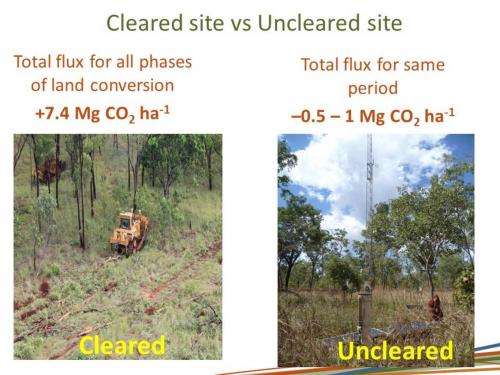
Knowing where large uncontrolled fires are burning at any time, and what areas have been burnt when and how intensively, is critical information for land managers across the north, and as far south as Port Augusta.
It enables better management of cattle herds, it informs fuel reduction burning programs and it probably saves lives in helping tour groups and grey nomads to avoid hot fires.
Indigenous savanna burning programs provide carbon emissions abatement for multinational energy and mining companies, and valuable employment on country for Indigenous ranger groups.
The verification of the reduction in net greenhouse gas emissions through the Australian Government's Carbon Farming Initiative also relies on TERN infrastructure.
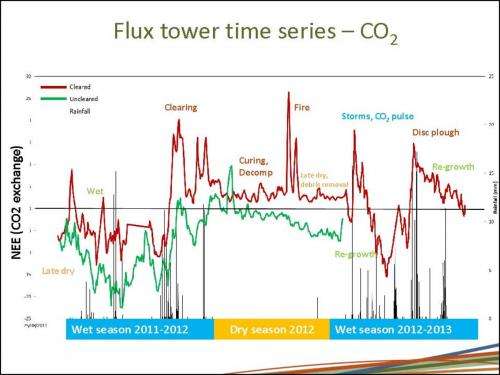
Up in smoke
This is just the Northern Territory tip of the TERN iceberg, which also operates in other regions and ecosystems. TERN, in turn, is also only one of 27 NCRIS facilities, all of which lack security of funding and are starting to lose staff.
In northern Australia, the Australian Government wants to sustainably develop land and water resources for increased food production, provide real jobs on country for Indigenous people, and support the resources sector. These objectives would be substantially more difficult and costly to achieve without TERN facilities.
Nationally and globally, monitoring the state of our ecosystems is a fundamental component of good governance now and into the future. And this crucial research is made possible through the visionary NCRIS investment initiated by the Howard Government.
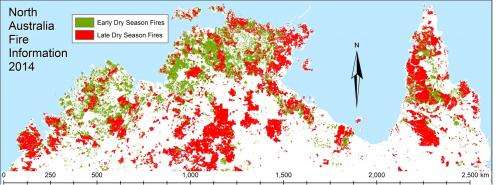
To withhold that funding now will cost more than just a few scientists' jobs. It will impact business, tourism, community and Indigenous groups, and devalue hundreds of millions of dollars and many hundred person-years' investment in world-class research facilities.
If roads, ports and airports are important to our nation's future, then so too is NCRIS.
Source: The Conversation
This story is published courtesy of The Conversation (under Creative Commons-Attribution/No derivatives).
![]()




















